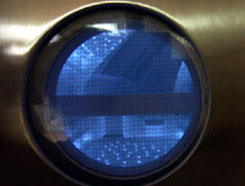Functional groups via plasma processing
Here is a quick review of five gases that create polar entities on a polymer surface to render it hydrophilic (or wettable):
- Oxygen - generally the most effective process gas for increasing surface energy – it creates carbonyl, carboxyl, ester, ether, hydroxyl, and hydroperoxyl functional groups, among others.
- Nitrogen - create amino groups, although the specific composition and density differ
- Ammonia - like nitrogen, ammonia creates amino groups with varying compositions and density
- Argon - the free radicals produced by argon, while promoting crosslinking, are also long-lived; thus, when a treated part is removed from the plasma chamber and exposed to the atmosphere, oxygen-containing groups (predominantly hydroperoxyl groups, it is believed) form. These may subsequently react with the adhesive to create a covalent bond at the interface.
- Air - is a very complex process gas, and produces all of the functional groups produced by the other four gases.
The best technique to analyze the chemistry of the functional groups on a polymer surface is an electron spectroscopy; our Surface Modification team is also available to help.

